Believe it or not, there’s still more to analyze about Super Mario Bros.! Here’s some interesting info that doesn’t really fit into any of the other sections.
Box Art
Here’s a look at the Japanese and American packaging, designs, and all that:
 |
And here are the backs of each box:
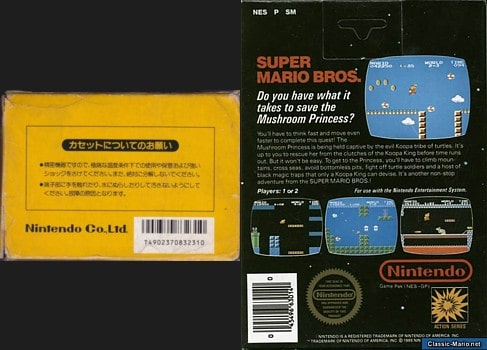 |
Incidentally, the cartoony art style found on the Japanese box was used on a lot of American Super Mario merchandise. Except in this particular instance Mario ended up looking more like a creepy kidnapper than a hero:
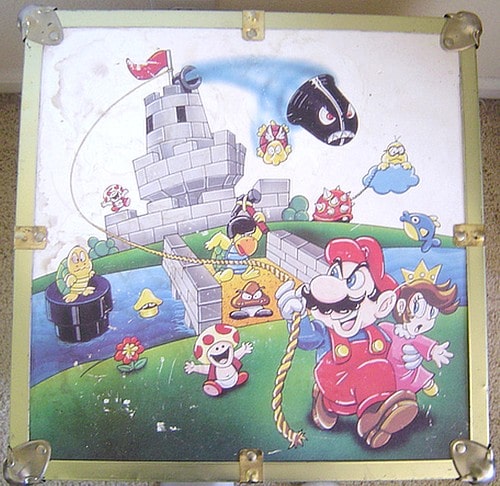 |
The Secret Minus World
Most Super Mario Bros. fans know about the “Minus World” – you go to the end of the underground area of 1-2 and do some wacky jumping to make the warp zone act funky.
I’d wager most American kids at the time found out about this from issue #3 of Nintendo Power:
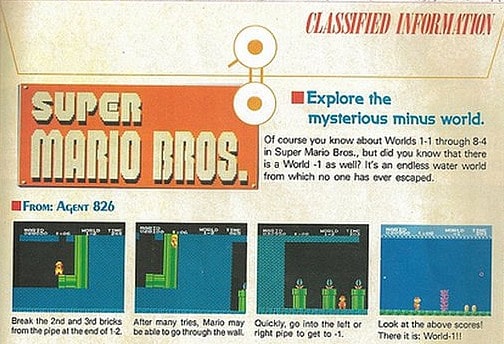 |
The result of the trick is that you end up in a new level called ” -1″, so it was called the “Minus World”. It’s an underwater stage that never ends, so it’s mostly just a neat novelty and a badge of honor you could wear by saying, “I’ve gotten to the Minus World!”
I should briefly mention that this trick works in the Japanese version too:
The trick even works on the Famicom Disk System version of Super Mario Bros., but the Famicom Disk System’s Minus World is completely different – it’s an outside level, but you swim around in it:
 |
Super Secret Worlds
American gamers eager for more Mario stuff went bonkers when the Minus World trick got out. Of course, because both the Japanese and American versions of the game are the same, this trick exists in the Japanese version too, and Japanese gamers naturally got a kick out of it. But while American gamers were freaking out about a measly single level that goes on forever, Japanese gamers were going crazy about something much more: a trick to reach 256 different levels!
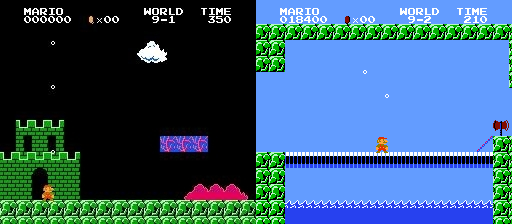 |
The story behind the discovery of this trick is long and convoluted, and I’m sure I’m getting some of the details wrong. But from what I’ve put together, it all went like this…
Hardware Design Differences
First, the Japanese Famicom system is quite different from the NESes we’re used to. It’s got two controllers permanently attached to it, one controller has a microphone, etc. etc. The major important difference here, though, is that the NES had the 10NES anti-piracy/lock-out system while the Famicom had nothing at all.
This means that the NES will reset itself if something isn’t right, but the Famicom will keep running under the same circumstances. It was this design difference that made the following trick possible for Japanese players but impossible for American players.
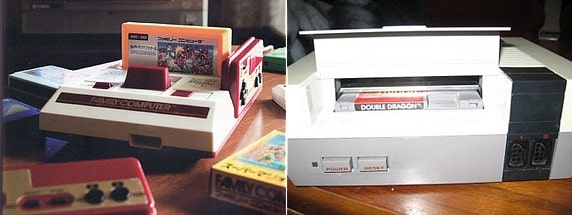 |
Initial Rumors
Super Mario Bros. was released in Japan in 1985 and instantly became a huge hit. Gaming magazines were plentiful, and they were always trying to find big scoops like secret tricks and stuff to increase sales. Apparently one reader had sent in to Family Computer Magazine info that they had uncovered a 9th world in Super Mario Bros. after a lightning strike nearby happened. Said person also included photographic evidence. This of course caused a big stir, but most people shrugged it off as yet another fake trick.
Some time after this, someone at Family Computer Magazine who was working on a strategy guide for Super Mario Bros. announced that he had found that there wasn’t just a 9th level, but actually 256 in all!
Explanation
Things got crazy enough that Family Computer Magazine ran a big article in which Shigeru Miyamoto, creator of Super Mario Bros., had to say that this “World 9”-related stuff was just the result of random garbage data and that no secret levels were ever created. He said he found all the commotion so interesting that he decided to add a genuine secret “World 9” in the sequel, Super Mario Bros. 2.
 |
At some point, I’m not really sure which, the strategy guide guy explained that he had figured out there were 256 worlds by using a computer to alter the game’s RAM while it ran. He made it clear there was no real trick to access these extra levels without resorting to methods beyond most gamers’ capabilities.
Persistence Pays Off
Even so, gamers continued to try everything they could think of, everything from tilting the cartridge to trying to physically mess with the carts. Eventually, someone somewhere somehow figured out how to access all these worlds and the trick was published by Family Computer Magazine:
 |
The trick is this:
- Get a Super Mario Bros. cartridge and a Tennis cartridge
- Insert the Mario cartridge and turn the system on
- Remove the cartridge while the system is still on
- Insert the Tennis cartridge with the system still on, then reset
- Play the game – toss the ball twice, serve, and then walk around
- Remove the Tennis cartridge with the power still on
- Insert the Mario cartridge again and reset the game
- Use the “continue code” by holding the A Button and pressing Start
- If you did everything right, you should start in a new world
- The world you start at depends on the number of steps you took while playing Tennis – for each step you take in Tennis, you go up one world in Mario
 |
Once word of this got out, this trick became legendary among Japanese Super Mario Bros. fans. Details of how it worked were even researched and published:
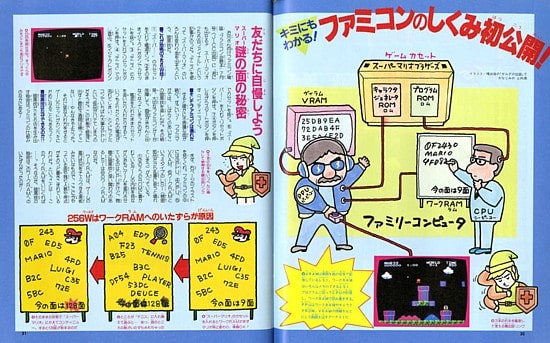 |
Alternate Method
Fans quickly discovered another way to do this 256 Worlds trick: use Family BASIC to alter memory addresses directly. The trick for this was:
- Connect the Famicom and the Famicom BASIC
- Insert the backup cartridge and turn the power on
- Bring up the menu screen using the keyboard, then press “1” on the keyboard to start BASIC
- Enter the code written below
- Press F8 to run the program
- Where it says “WORLD=?”, type the number of the world you want to play and hit Return
- Once it says “OK” on the screen, eject the backup cartridge with the system still on
- Insert the Super Mario Bros. cartridge
- Reset the game
- Use the continue code at the title screen – hold A and press Start
- You’re now at the world you selected!
The BASIC code is this:
10 FOR I=&H7D3 TO &H7DC:POKE I,0:NEXT
20 POKE &H7FF,&HA5
30 INPUT "WORLD=";A
40 POKE &H7FD,A+255AND255
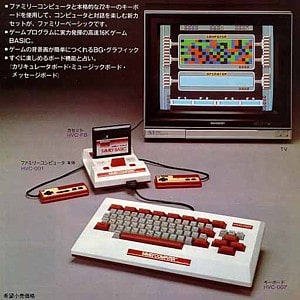 |
Dangers
Obviously, the system wasn’t designed for games to be pulled out, so Nintendo and other publishers made it clear that doing this could very well harm your system. In particular, I’ve read that the worst thing to do is to tilt the cartridges as you pull them out. They say that doing so could possibly cause a short circuit with some of the connectors. I don’t know how true or not that is, but if you’re going to try this trick, be warned.
Demonstration
I’d love to make a video showing this trick myself, but since Famicoms are pretty expensive on eBay and my NES is broken (even after installing new pin connectors 🙁 ) I went and found a Japanese video of someone showing off the Tennis trick and subtitled it here:
Final Thoughts
I assume most American kids never even knew about any of this – I didn’t, at least. I think I would’ve been insanely jealous. It’s okay, though, we got the Game Genie, and I invented a ton of Game Genie codes to make awesome new levels in Super Mario Bros. So I’d say we’re even.
Actually, I wonder if the top-loading NESes that came out much later can do this trick… I don’t have one, so I can’t try it out. Assuming both Super Mario Bros. and Tennis are the exact same games in both regions, it’s plausible…
Anyway, this goes to show that even though the Japanese and American versions of Super Mario Bros. were identical game-wise, there were regional differences for unexpected reasons. And I bet this trick is why they made it so Super Famicom cartridges can’t be pulled out while the system is on.
As a side note, this whole 256 worlds thing is called the “Undercover” trick in Japanese. I’m not sure why, but it is.
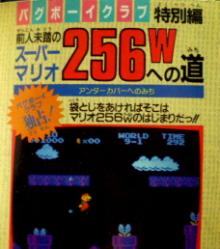 |
A Request
If anyone out there with firsthand experience of all this can correct my info (I’m pretty certain I have some of the historical details wrong or in the wrong order) please let me know!
Also, if anyone reading has any old Family Computer Magazine issues from 1985/1986 with Mario stuff in there, please contact me. I think a lot of this stuff happened around April 1986, but I’m not sure.
Mario Lingo
Among American gamers, the name “Super Mario Bros.” is often just shorted to “Mario Bros.” or just “Mario”, as in, “Hey, let’s play some Mario!”
In Japanese, it’s common to just say “Mario” too, but another common shortened version is “スーマリ”, pronounced “Suumari”.
So if you ever go to Japan and want to impress someone with your mad gamer skillz, bust out the word “Suumari”. Just make sure you’re talking to a gamer or else you won’t be understood.
Different Versions
There are actually many different versions of Super Mario Bros. out there. Here’s just a very quick look at them – many came out in America too but some of these were Japan-only.
Game & Watch version
There were a bunch of different Game and Watch games in the 80s, and Super Mario Bros. was no exception.
 |
Famicom Disk System version
This was basically the same exact game as the Famicom cartridge version. Due to the different hardware, though, some of the bugs that exist in the Famicom version have different effects in this version, like the Minus World difference we looked at earlier.
 |
Various combination NES games
I’m guessing most American gamers encountered Super Mario Bros. in one of these several-games-in-one cartridges. It always felt to me like the standalone Super Mario Bros. cartridge wasn’t as common back in the day, at least none of my friends had the standalone cart.
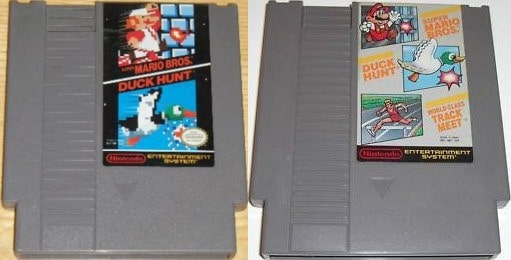 |
VS. Super Mario Bros.
This is an arcade version of Super Mario Bros. It’s mostly the same game as the NES version, the only differences I know of are that 1-ups and such were removed, there are more enemies, warp zones have been removed, and apparently some levels from the Japanese sequel are included. The game was meant to be hard so that you’d spend more money to play it.
 |
All Night Nippon Super Mario Bros.
This was an edited version of Super Mario Bros. with an All Night Nippon theme.
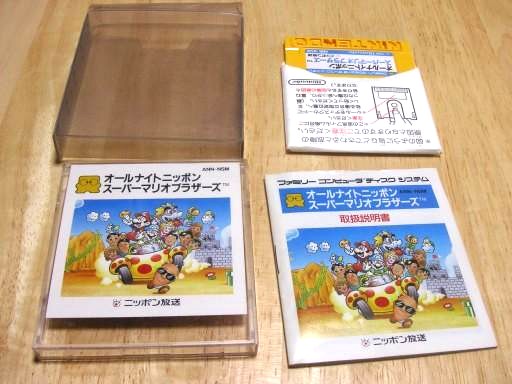 |
As you can see, there were a lot of graphical changes made. Many elements from the Japanese Super Mario Bros. 2 were incorporated as well, including a few stages. You can read more about it all here.
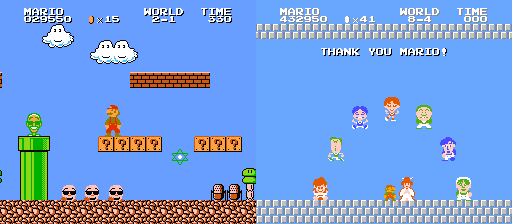 |
Super Mario Bros. Special
This was released for the Japanese NEC PC-8801 in 1986. It’s a semi-port of the original game, but is also very different.
Some fine ROM hackers worked on a project to make a patch for the NES Super Mario Bros. ROM that recreates this PCE-8801 game. It’s not 100% perfect due to technical reasons, but it’s pretty close. You can check it out here!
Super Mario Collection / Super Mario All-Stars
This was a Super Famicom/Super NES port of 8-bit Super Mario Bros. games. The first Super Mario Bros. game got a graphical and audio upgrade. Some of the physics were slightly changed, too.
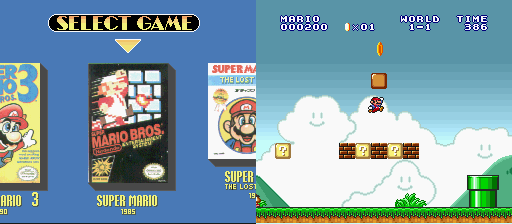 |
Super Mario Deluxe
This is the Game Boy Color port of Super Mario Bros. If you’re good at it, you can even unlock levels from the Japanese sequel!
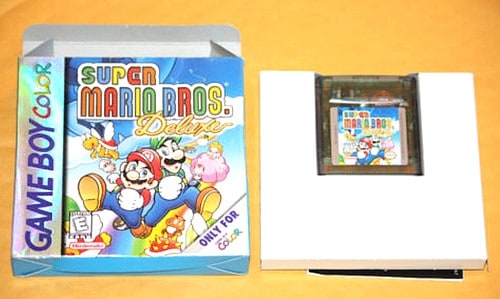 |
Super Mario Bros. Famicom Mini/Classic NES Series
This is the Game Boy Advance port of Super Mario Bros. I’m assuming it’s probably just the Famicom/NES ROM hooked up to an in-house emulator – I know some of these old NES ports to the GBA worked that way. I might be wrong, though.
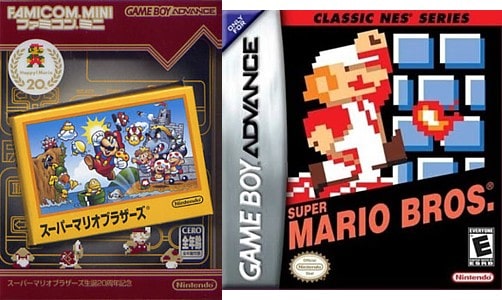 |
Commercials
This is apparently a commercial that aired for Super Mario Bros. back in the day in Japan. I quickly translated and subtitled it for English speakers’ reference:
Pretty simple stuff, but Japanese fans seem to find it nostalgic.
As far as I know, Americans never got a Super Mario Bros. commercial, so I guess that feeling is something American gamers miss out on. That’s okay, though, because we got gems of our own, like this:
To this day I sometimes randomly sing that song around the house, like a true game nerd.


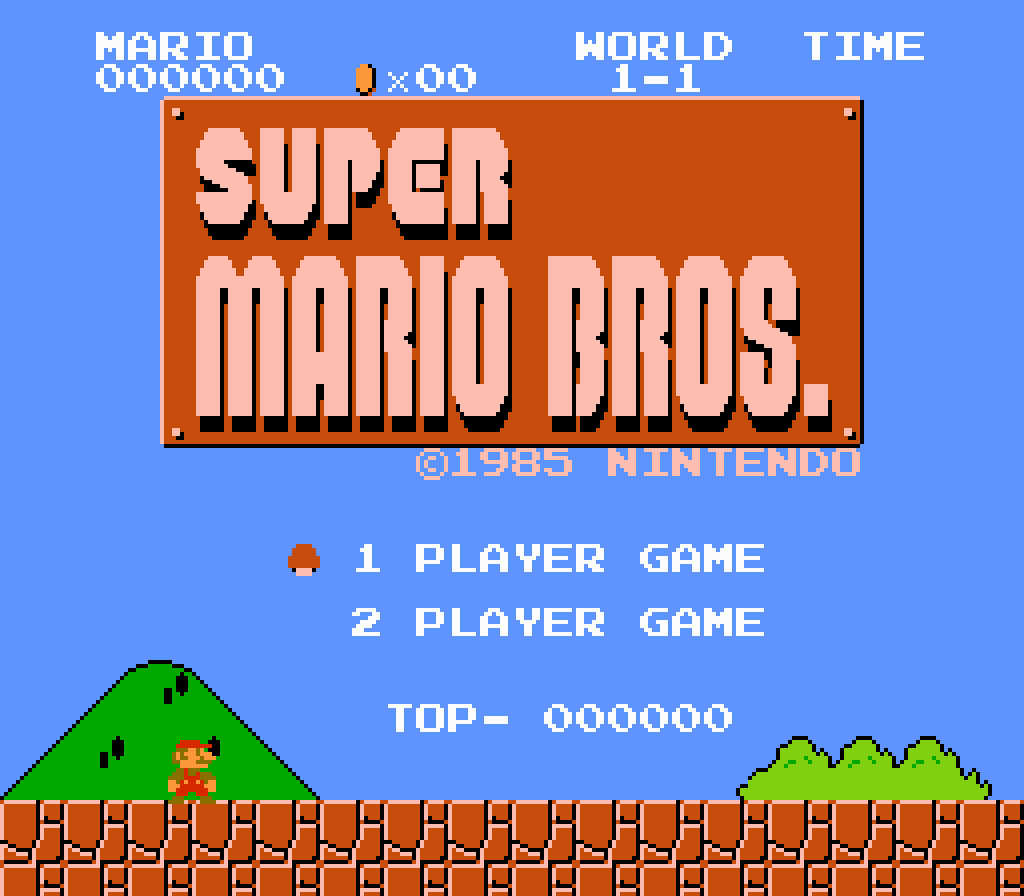
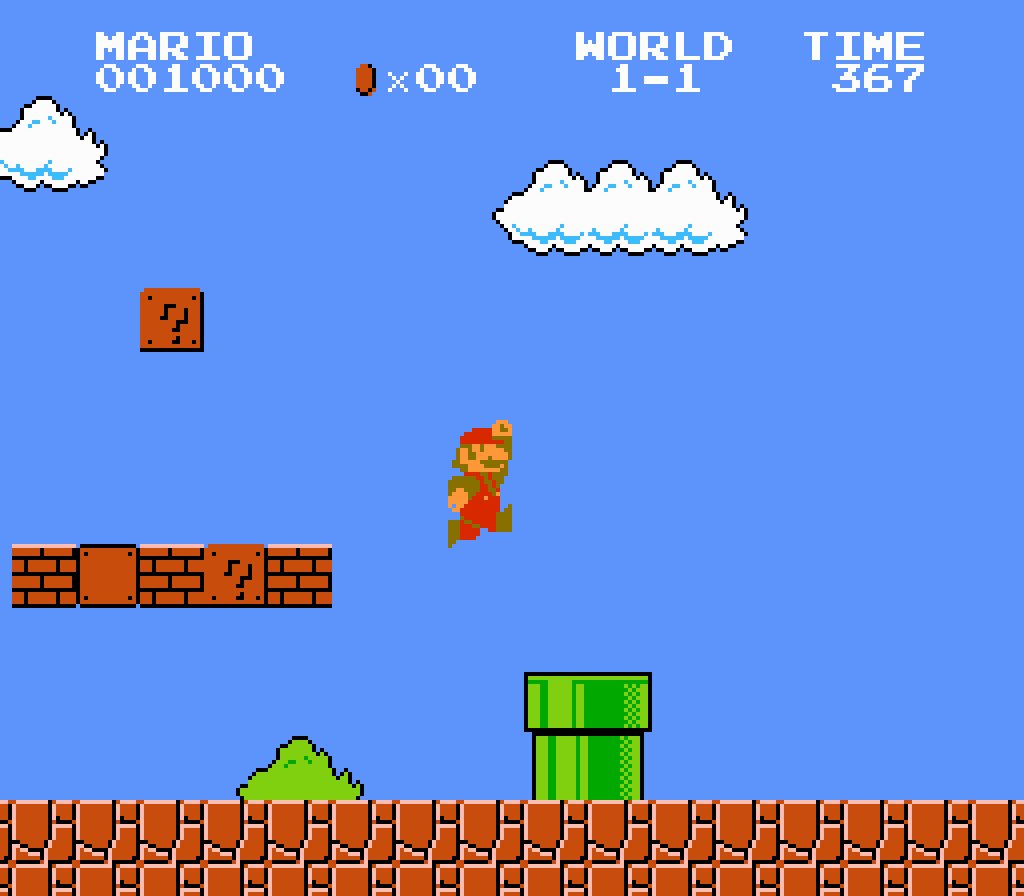
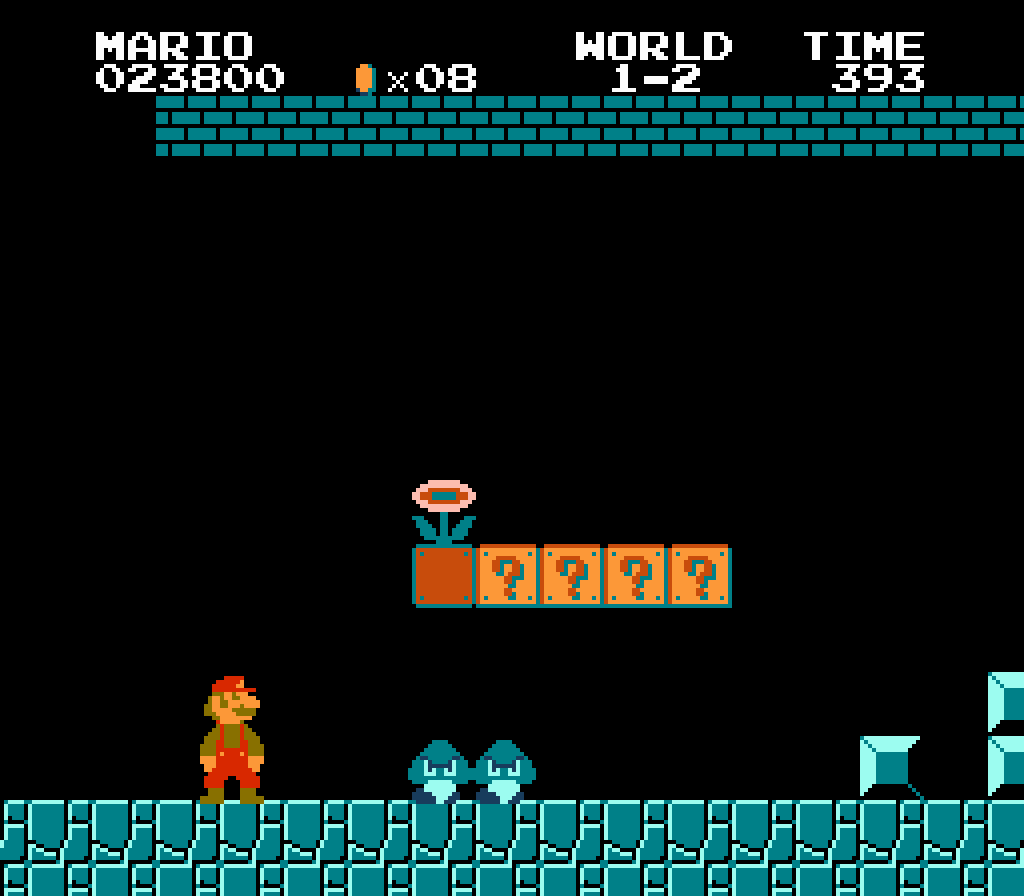
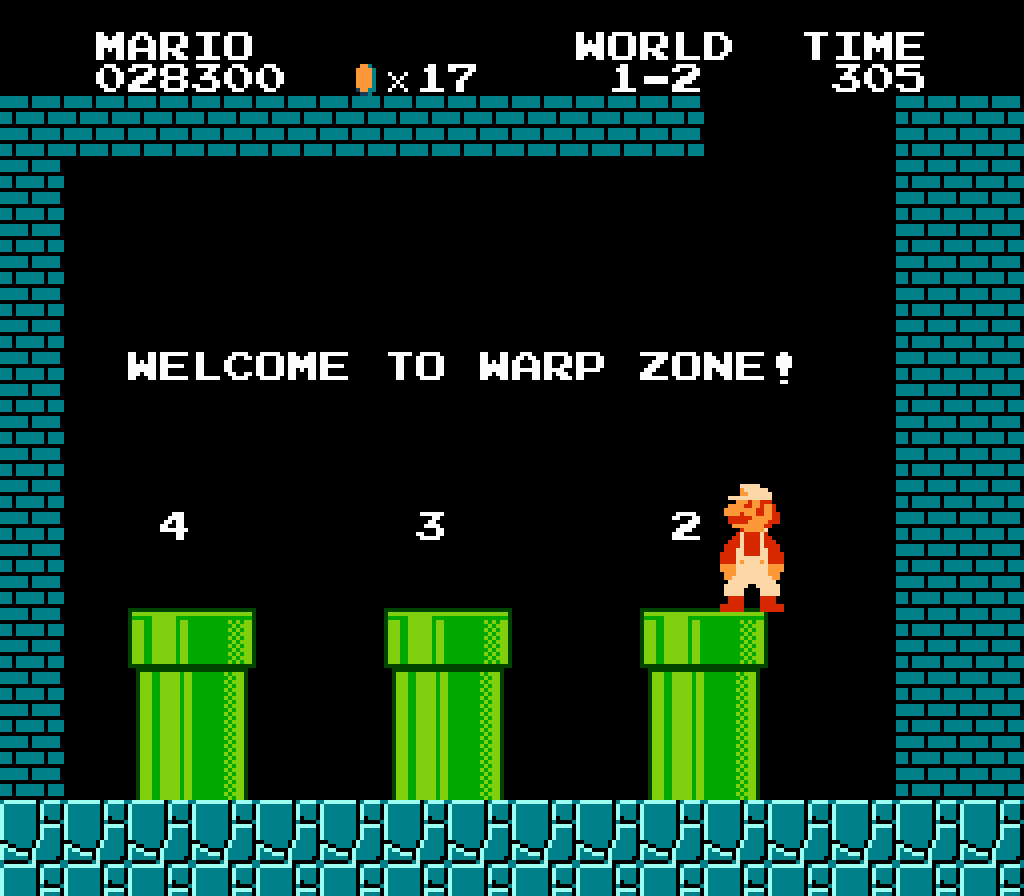
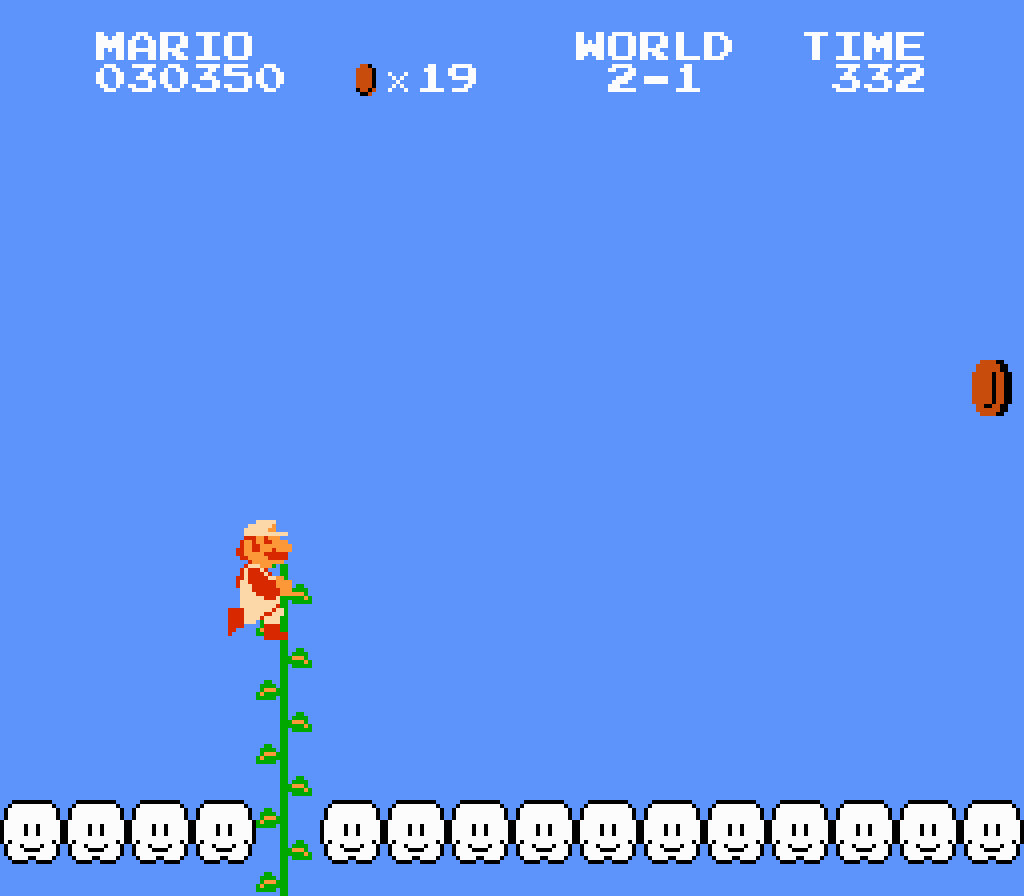
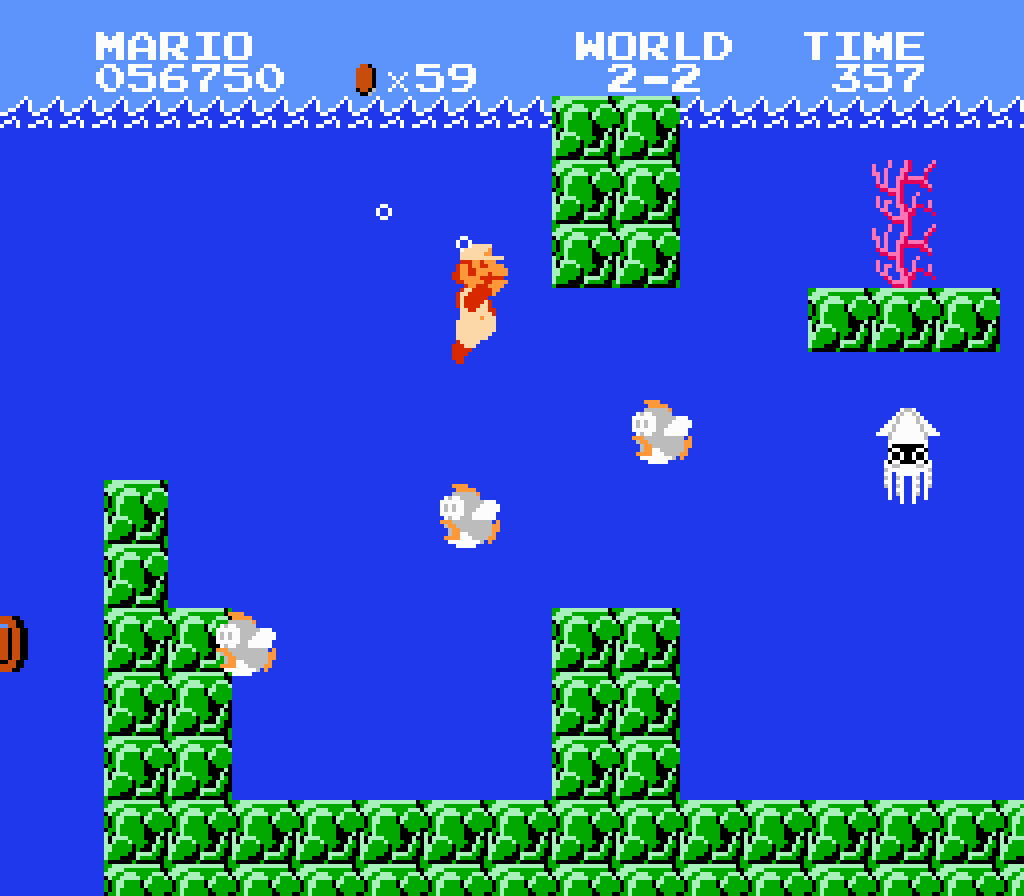
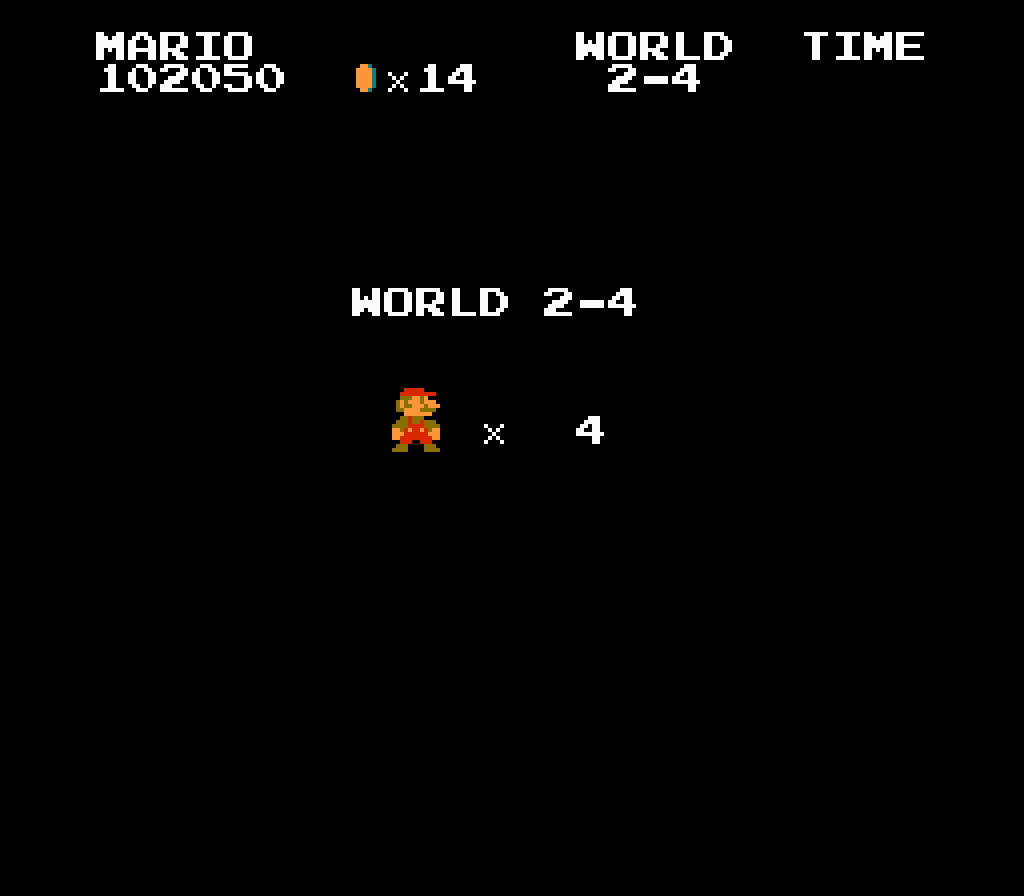
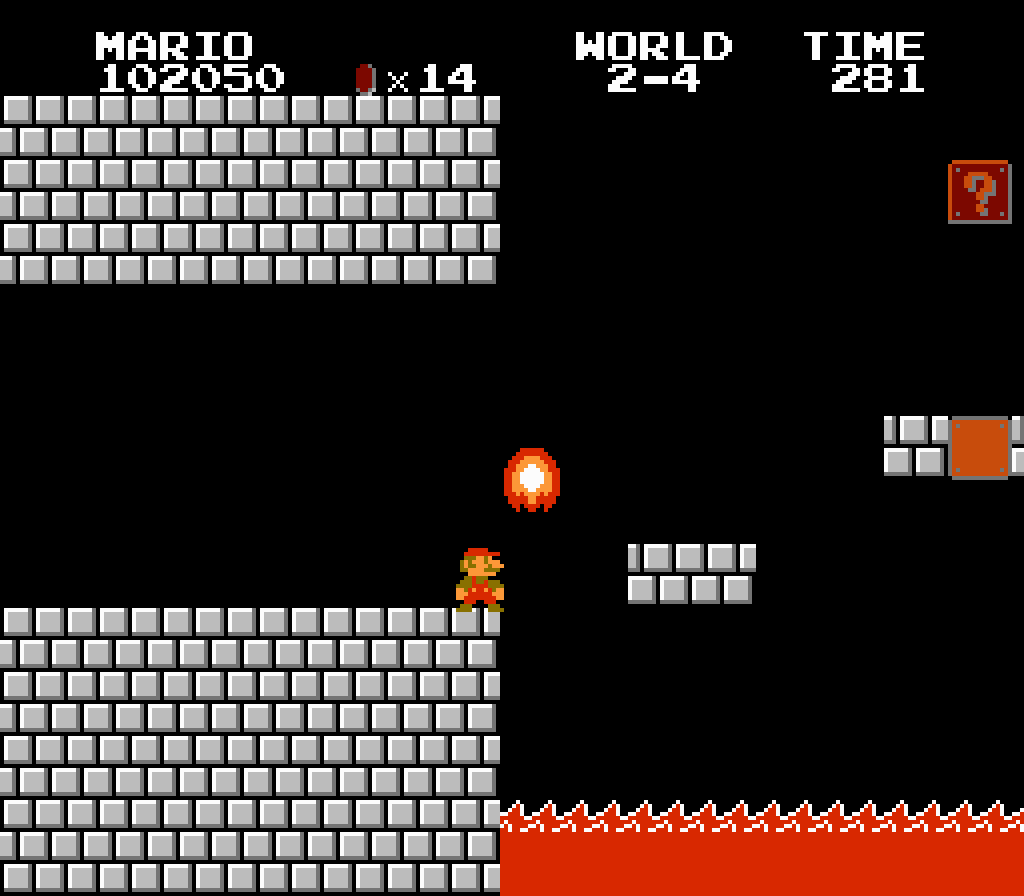
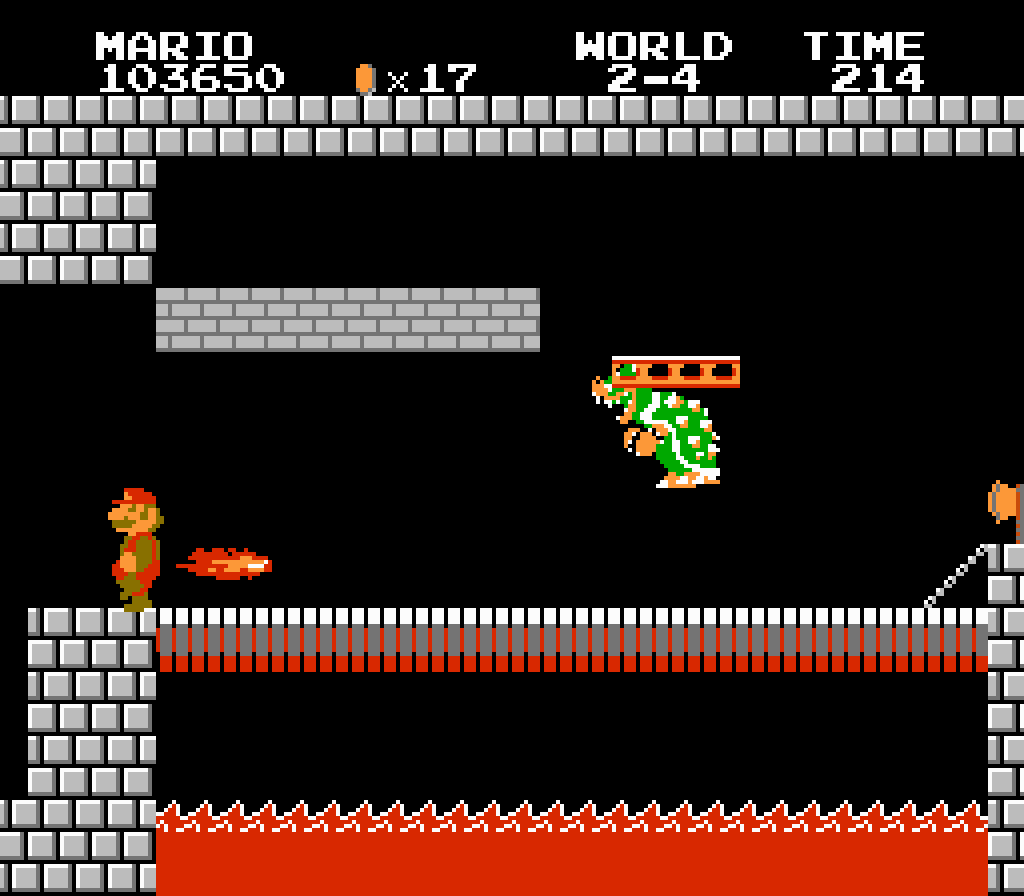
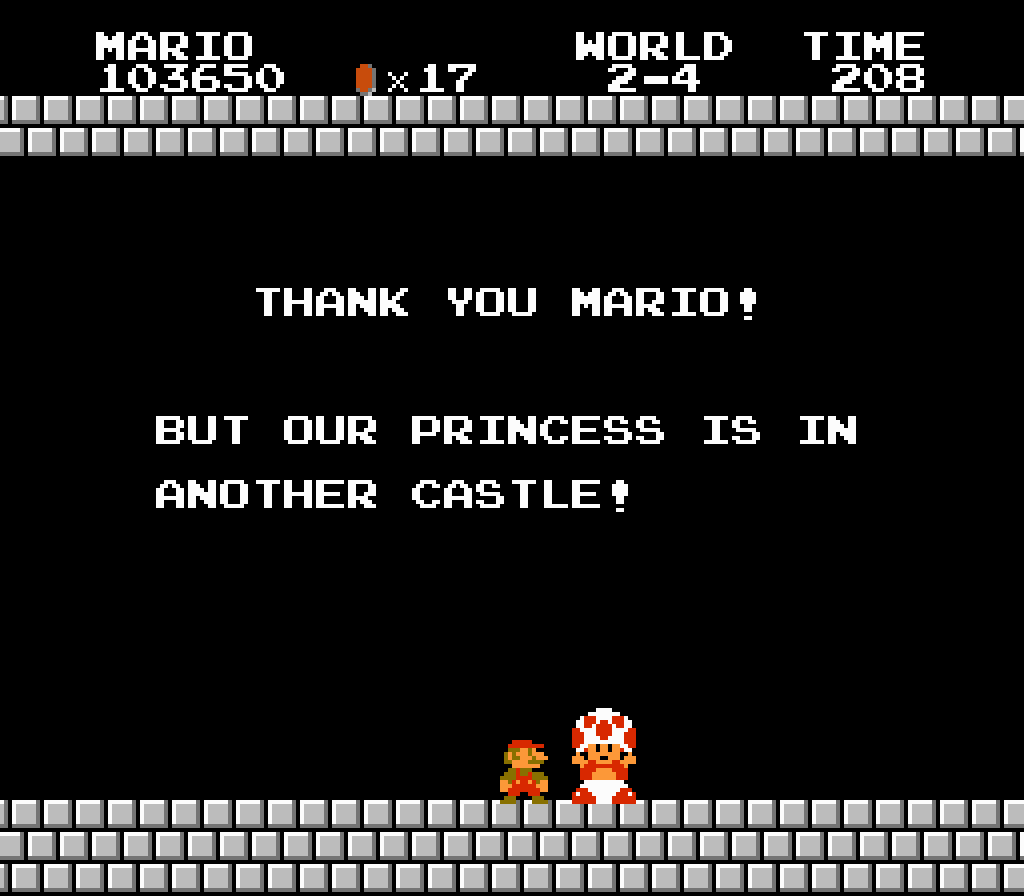

No Comments